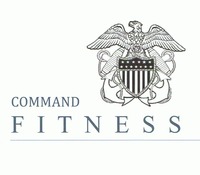Can interval training increase your capacity to burn calories?
Has your weight loss journey become stagnant? Are you looking to jolt your fat burning workout routine into overdrive? Are you looking for a way to burn more fat in less time? It's time for you to take closer look at interval training. In the past, interval was almost exclusive used by elite athletes. I remember enduring some grueling interval workouts as a track athlete. Now the average Joe or Jane can use interval training as a powerful fat burning workout routine.
How does it work?
It’s really quite simple. Interval training just means performing an exercise at a high intensity for a specified time period followed by a period of rest or lower intensity exercise.
For example, if you were going for a walk, you would insert periods of running at an 80% intensity level during your walk. You can use a watch with an interval timer or if you are outside, you can run between two landmarks; telephone poles, for example.
What are the benefits of interval training?
Regardless of whether you are an elite athlete or are brand new to exercise, interval training will deliver for you.
· There is no need for special equipment. Just modify your current routine to fit the interval method.
· You won't get bored. Your workout routines will become shorter, the intensity will become higher, and the number of exercises that can be used for intervals is limitless.
· You'll quickly increase your lung capacity, enabling you to exercise longer, with more intensity.
· By exercising with more intensity, even for short periods, you'll burn more calories while you are exercising, and at rest.
Is interval training good for my muscles?
Interval training is better for your muscles than steady state cardio. While you are exercising, lactic acid builds up in your muscles. If allowed to stay in your muscles for an extended period of time, your muscles can get really sore. During interval training the amount of lactic acid build up is reduced because of the alternating levels of intensity. This leads to much less soreness after and between workouts.
Can interval training be customized according to the user?
Absolutely. Your workout can be modified any number of ways. To provide variety to your workout routine you can change exercises; for example, exercise bike one week, elliptical the next week and burpees the next week. You may want to vary the duration of the exercise intervals. For example, as you get in shape, you may want to decrease the rest or low intensity period until you reach the point that your low intensity period (or rest period) is half of your high intensity period. This is called a "Tabata" interval, the ultimate in fat burning workout routines.
You may have a specific fitness goal that you want to work towards scientifically like training towards a target heart rate. I am a soccer player as well as a conditioning coach for high school soccer. I like to incorporate exercises that involve jumping and kicking. If you are involved in a particular sport, you may want to use exercises that mimic movements used in your sport. These type of movements add interest to your workouts and increase efficiency and endurance of sport specific movements.
Are there risks involved in interval training?
Sure, but not many. Any exercise involves risk of injury. If you are new to exercise or have a health condition, see your doctor before you attempt this type of training. Otherwise, there is a smaller chance of overuse injuries due to change of intensity or gait during exercise. You also require less time for workouts, which lowers the chance of injury.
The most common injuries are the same with interval training as they are with any exercise.
· Make sure to warm up thoroughly. Failing to warm up properly causes a shock to the muscles resulting in cramps or pulls.
· Ease into high intensity intervals and increase intensity as your wind improves. If you do this, you will be pleasantly surprised how quickly you improve.
